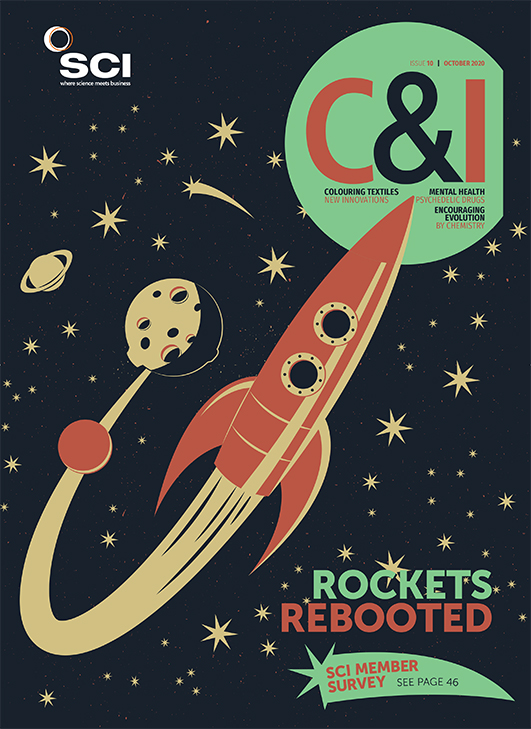Anthony King
The eyes of some insects are blanketed in tiny protrusions to dampen light reflectance. Scientists in Switzerland have now shown how fruit flies form this special coating and how to reverse engineer such protrusions onto man-made materials.
Led by Vladimir Katanaev at the University of Geneva, the researchers discovered the transparent nano-coatings on the eyes of Drosophila fruit flies in 2011. These consist of a network of small protrusions 200nm in diameter and 40nm high. Typically, the cornea of an insect reflects 4% of incoming light, but this drops to zero in flies with the coating.
The scientists describe how the transparent layer is made by the insect using two ingredients – a protein called retinin and a wax (Nature, 2020, 585, 383). These components build a network of protrusions via a process first proposed by UK mathematician Alan Turing in the 1950s, also used to explain other natural patterns such as the stripes on zebra or spots on leopard.
An ‘activator’ (retinin) and an ‘inhibitor’ (a wax) interact to generate a repeatable pattern. The ratio of retinin and wax can determine whether the insect eye hosts discrete protrusions or link into labyrinth-like structures. Some species of fruit flies contain protrusions while others have maze-like ridges.
When the scientists used genetic tricks to force a fruit fly to make excess retinin, more long ridges were generated. ‘When you have individual nipple-like protrusions, you have more anti-reflective function, but less adhesive function,’ says Katanaev. ‘When you force them to form ridges, you improve the anti-adhesive function and decrease anti-reflection.’
In this way, more activator creates an eye coating that serves to keep the eye clean, while less protein creates a coating optimal for reducing reflectance, which might be especially important in low light environments.
‘We can now recreate the nano-coatings on artificial surfaces by admixing retinin under different conditions on commercial glass or plastic,’ says Katanaev, ‘but we suspect that we could cover any surface – metal, wood, paper or textiles.’
The team – which includes researchers at ETH Zurich and University of Lausanne – lists numerous applications, including in the energy, electronics, automotive, marine, aerospace and medical-devices industries. They are working with lens manufacturer Medicon to coat contact lenses that are worn overnight, to reduce adhesion of biomolecules.
‘This is one of the best and most beautiful pieces of research I have seen in a while,’ says materials chemist Silvia Vignolini at the University of Cambridge. Others have investigated insect nano-coatings, but what is impressive here is they showed ‘how the materials are formed and were able to exploit this by replicating it on an artificial surface.’





